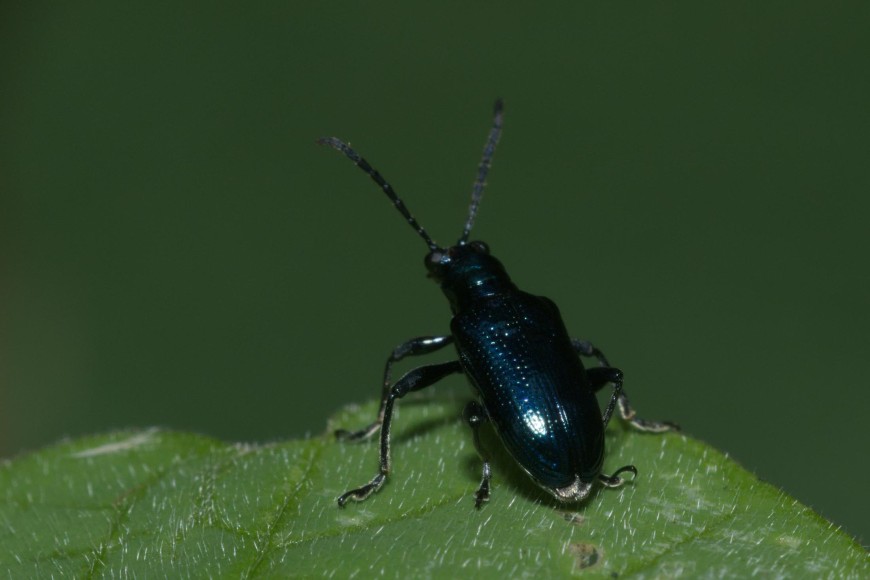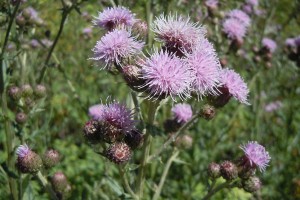Californian thistle leaf beetle
History in New Zealand
Californian thistle leaf beetles are native to Europe and Asia, but they are quite rare, possibly because of high levels of parasitism. The beetles were first imported into New Zealand from Canada by the DSIR in 1981. Parasite-free progeny from this importation were released into a field cage in 1983 but failed to prosper. A second importation was made in 1990 and the beetles were mass-reared and distributed widely during the early 1990s. Establishment success was disappointing, and the beetles were thought to have only survived at one site near Auckland. More recently the beetles have been seen in the Hawke’s Bay, and it seems more likely that they also established here rather than subsequently dispersed from further north. Similar results have been obtained with this biological control agent in Canada.
How would I find/recognise it and what is its lifecycle?
You are unlikely to see adult leaf beetles because of their rarity and cryptic behaviour - they tend to drop to the ground when disturbed. However, keep an eye out for metallic bluish-black adult beetles sitting on thistle plants. They are about 5 mm long and tend to be most easily seen for a couple of weeks when they are mating in early spring.
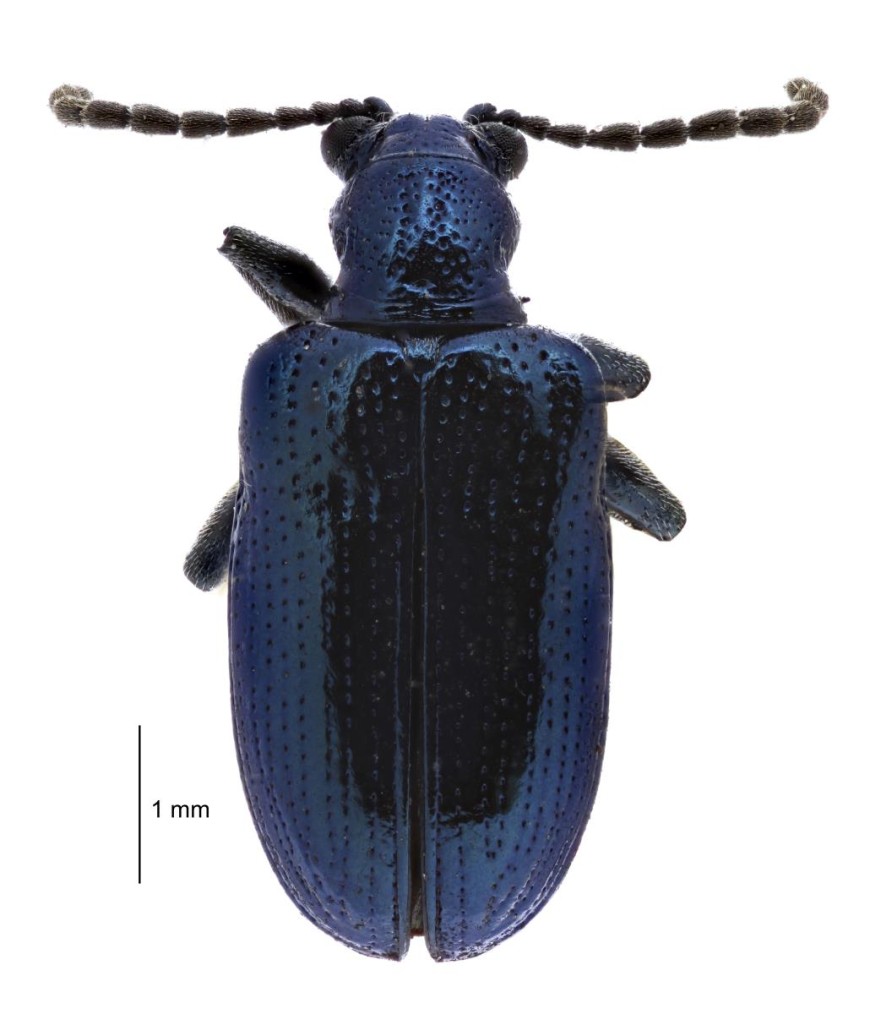
Image: Californian thistle leaf beetle (Lema cyanella).
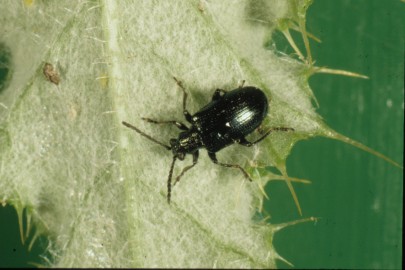
Image: Californian thistle leaf beetle on a thistle leaf.
Also check both sides of the leaves and stems for eggs during spring. The eggs are creamy- white, oval shaped, pinhead sized, and laid singly (as opposed to batches). Studies have shown that the females may lay on average about 1500 eggs each.
The eggs take nearly 2 weeks to develop. Grey slug-like larvae hatch out and they feed mostly on the undersides of the leaves. During the summer keep an eye out for leaves with holes in them, or patches where there is only a thin membrane left, giving a windowed appearance. Note that feeding damage around the margins of the leaves is usually caused by other invertebrates such as slugs. The larvae feed for about a month before pupating in the soil for nearly a fortnight. New adults emerge and feed for a time in late summer/early autumn to build up reserves to sustain them over the winter. There is only one generation a year.
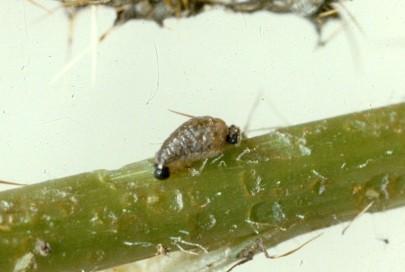
Image: Californian thistle leaf beetle larva.
It is possible that you may come across a similar looking beetle, the Californian thistle flea beetle (Altica carduorum) which was also released widely in the early 1990s but is not thought to have established. The adults are slightly smaller and rounder in shape than the leaf beetles, with large hind legs that enable them to easily jump a metre away. These adults lay orangey-pink eggs that hatch into black, slug-like larvae. The beetle is easy to differentiate from the other insect biocontrol agent for Californian thistle.
See Californian thistle gall fly, Green thistle beetle.
How does it damage Californian thistle?
Both the adults and larvae feed on the leaves and stems of Californian thistles. They can cause heavy damage when kept on caged plants, but in the field the level of damage appears to be inconsequential to the plant.
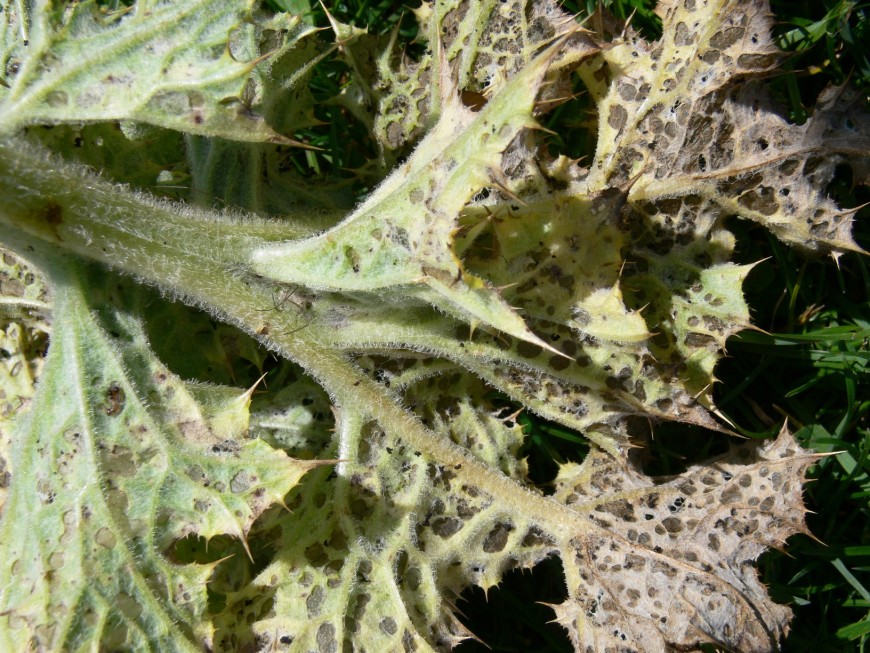
Image: Californian thistle leaf beetle damage.
Will it attack other plants?
Californian thistle leaf beetles have been recorded attacking Scotch thistle (Cirsium vulgare), and winged thistle (Carduus tenuiflorus) in New Zealand and they could potentially attack other thistle species such as nodding thistle (Carduus nutans) and variegated thistle (Silybum marianum).
How effective is it?
Adult and larval feeding can be conspicuously damaging but, for unknown reasons, populations appear to be highly localised.
How can I get the most out of it?
Because this agent appears to have limited potential as a control agent, we do not propose that any further effort should be put into increasing its distribution or numbers. The beetles are capable fliers and can disperse readily on their own.
Key contact


